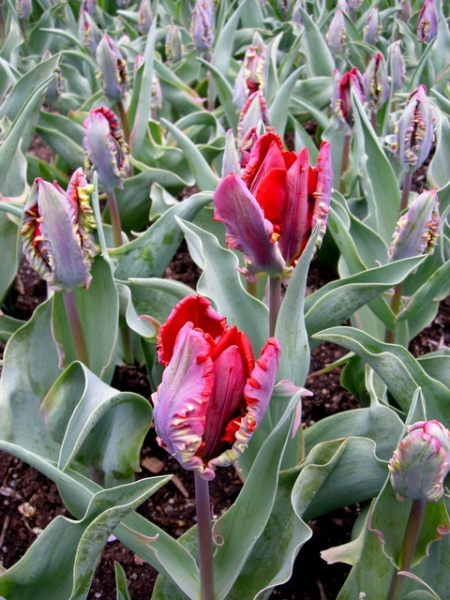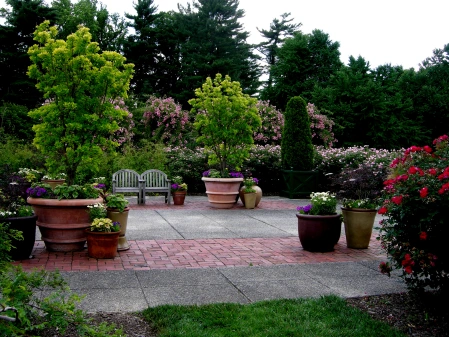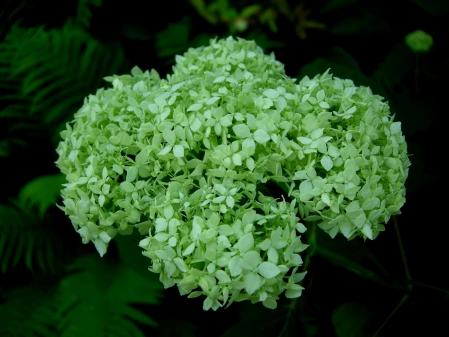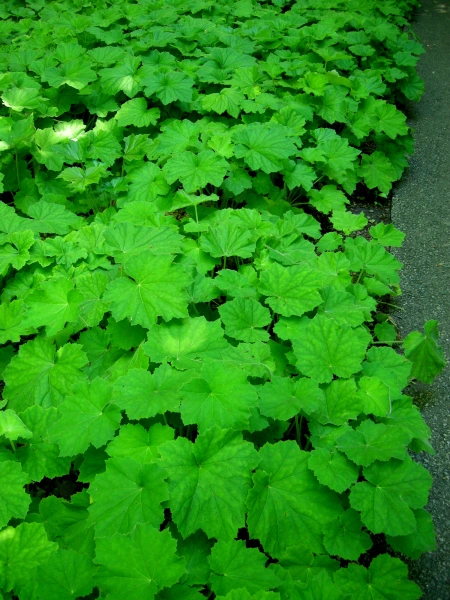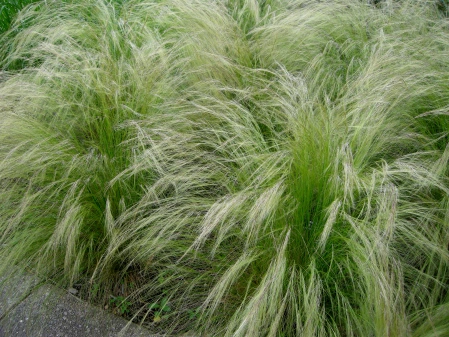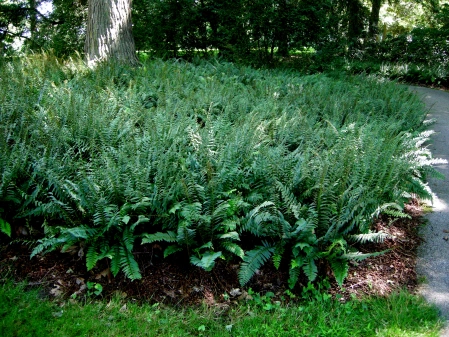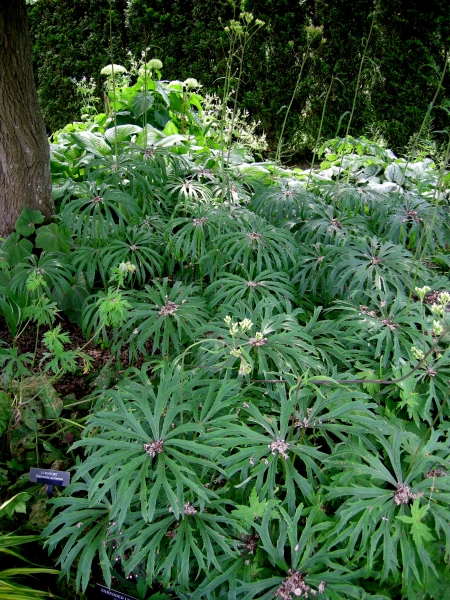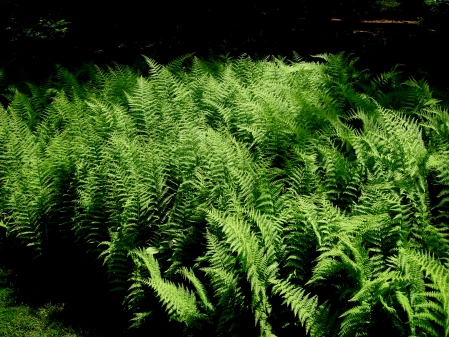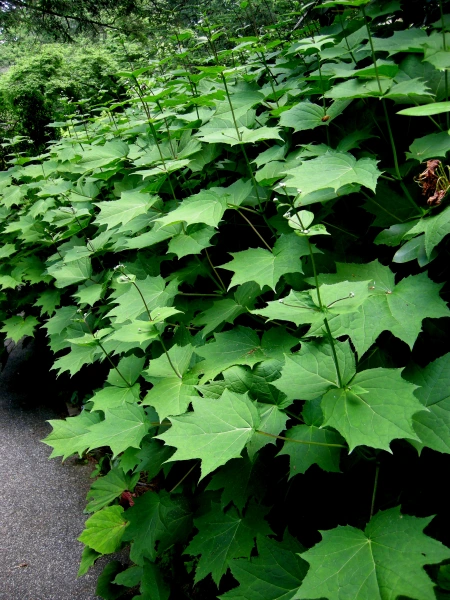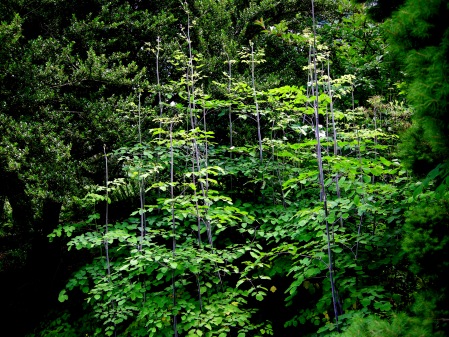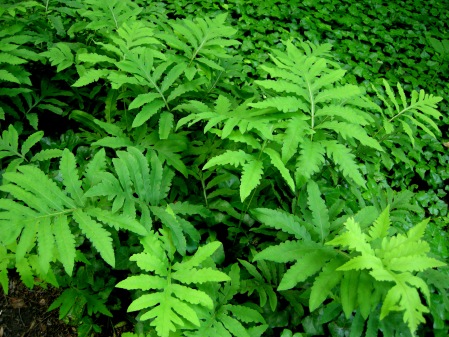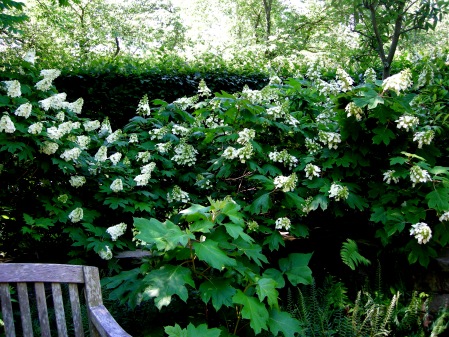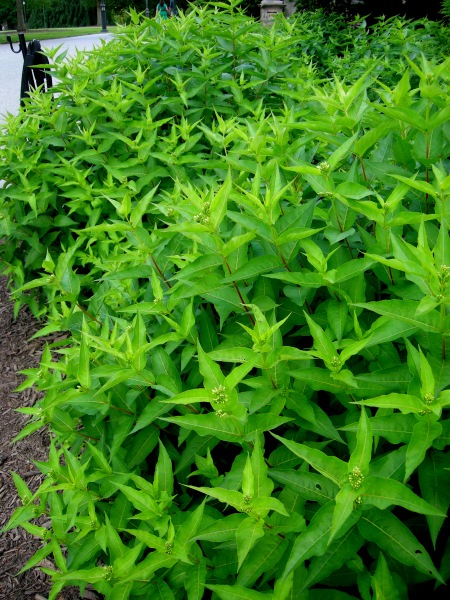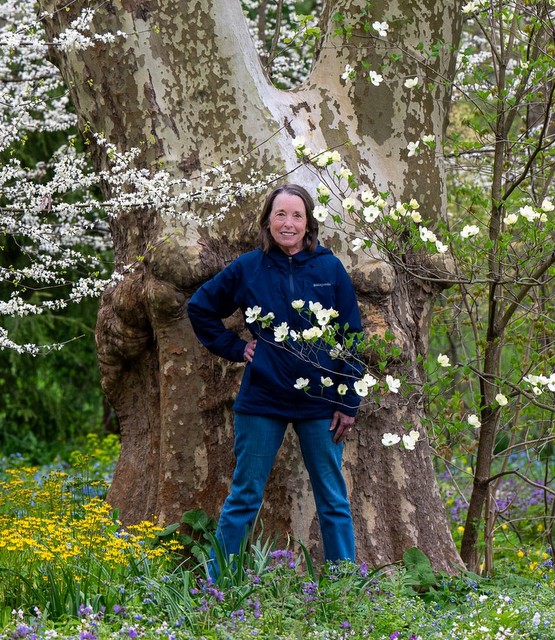Carolyn’s Shade Gardens is a retail nursery located in Bryn Mawr, PA, specializing in showy, colorful, and unusual plants for shade. The only plants that we ship are snowdrops and miniature hostas. For catalogues and announcements of events, please send your full name, location, and phone number (for back up use only) to carolyn@carolynsshadegardens.com. Click here to get to the home page of our website for catalogues and information about our nursery and to subscribe to our blog.
.  This color combination is magnificent for spring.
This color combination is magnificent for spring.
.
During 2012 to 2013, I have been visiting Longwood Gardens in Kennett Square, Pennsylvania, U.S., every few months and highlighting some aspect of this amazing place (last year I focused on Chanticleer). Links to my previous four posts are at the end. There is much to see there with 325 acres open to the public and 20 outdoor gardens.
On April 18, Michael and I headed out to Longwood with the specific objective of photographing the plants in the native woodland, Peirce’s Woods. Of course, on the way to the woods, we got sidetracked by the bulb displays out front and along the Flower Garden Walk. Although masses of tulips and other bulbs are just about polar opposite to native plants naturalized in a woodland, they are still gorgeous so I will show you a few photos as I explain the history of the woodland.
.
 Summer snowflake, Leucojum aestivum, is a great plant for massing. Mine grow and self-sow quite readily in both south-facing and east-facing locations as well as in full deciduous shade in my woodland.
Summer snowflake, Leucojum aestivum, is a great plant for massing. Mine grow and self-sow quite readily in both south-facing and east-facing locations as well as in full deciduous shade in my woodland.
In 1700, a Quaker family named Peirce purchased the area that is now Peirce’s Woods from William Penn to establish a working farm. In 1798, the Peirces began planting trees to establish an arboretum on the property. Eventually the area became known as one of the finest collections of trees in the country. The great industrialist Pierre DuPont (1870 to 1954) purchased the property in 1906 with the specific purpose of preserving the magnificent trees.
.
 You will find fabulous container gardens throughout Longwood, including this one outside the Visitor’s Center with a large native dogwood underplanted with daffodils.
You will find fabulous container gardens throughout Longwood, including this one outside the Visitor’s Center with a large native dogwood underplanted with daffodils.
Peirce’s Woods comprises seven acres planted to showcase the ornamental characteristics of native plants from the eastern U.S. deciduous forest. The shade trees are mostly oak, ash, maple, and tulip trees, some over 200 years old. The understory is native flowering trees and shrubs underplanted with native groundcovers. All the plants are labeled so it is a great place to visit to get ideas for your own woodland garden. Before I highlight the plants there, a few more bulb photos:
.
 Narcissus ‘Tahiti’ and ‘Flower Drift’
Narcissus ‘Tahiti’ and ‘Flower Drift’
.
.
.
.
.
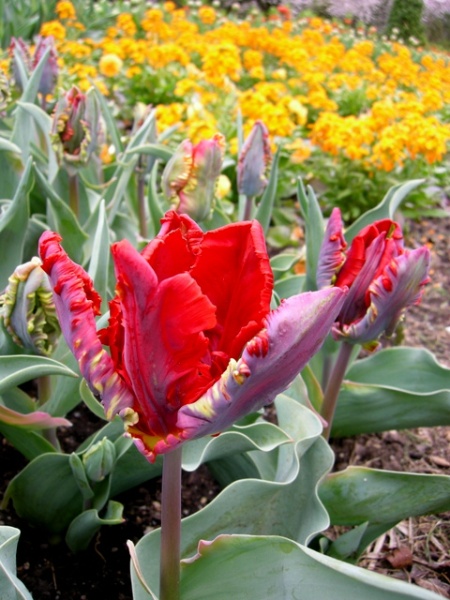 I think this tulip should be called the Little Shop of Horrors tulip—you definitely would not want to stick your finger inside of it.
I think this tulip should be called the Little Shop of Horrors tulip—you definitely would not want to stick your finger inside of it.
.
 As we neared the end of the Flower Garden Walk, we were greeted by this magnificent vista.
As we neared the end of the Flower Garden Walk, we were greeted by this magnificent vista.
We came to Longwood with the objective of viewing and photographing Peirce’s Woods. I fully intended to show scenes of the woods as a whole and close ups of individual native wildflowers. However, I didn’t realize that because the weather has been so cold this spring, many of the flowers would not be blooming yet. My own garden is always ahead because it is on a south-facing slope and the soil warms up early. Also, as soon as we got there and typical for this spring, the sun went in, the wind picked up, it started to rain, and the temperature plummeted.
.
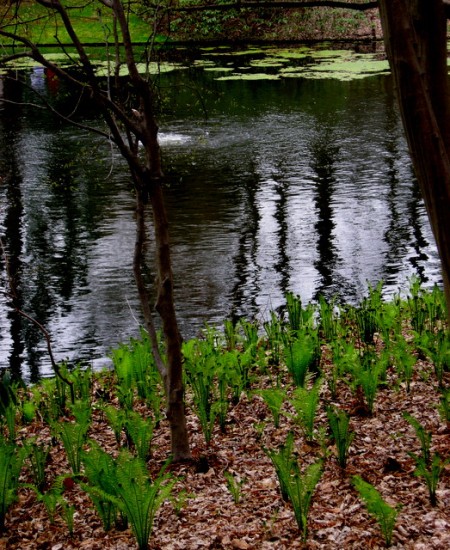 The only other landscape shot that I got: ostrich ferns by the shore of the lake. These ferns can be quite tall, 3 to 5′, spread aggressively by runners, and are the source of edible fiddleheads.
The only other landscape shot that I got: ostrich ferns by the shore of the lake. These ferns can be quite tall, 3 to 5′, spread aggressively by runners, and are the source of edible fiddleheads.
Michael and I were both under-dressed with no raincoats so I decided to take photos of the plants that were blooming and come back the following week for the landscape shots and later-blooming plants. As usual, work at the nursery got in the way, but I wanted to show you the beautiful native plants that I was able to capture on film. Just picture me kneeling patiently by each plant and snapping the photo in between gusts of wind and bouts of rain:
.
 ‘Miracle’ coralbells, Heuchera villosa, is one of my favorite cultivars of this tough eastern native. The only coralbells I sell at my nursery are offspring of eastern natives H. villosa and H. americana because I find the other types not hardy.
‘Miracle’ coralbells, Heuchera villosa, is one of my favorite cultivars of this tough eastern native. The only coralbells I sell at my nursery are offspring of eastern natives H. villosa and H. americana because I find the other types not hardy.
.
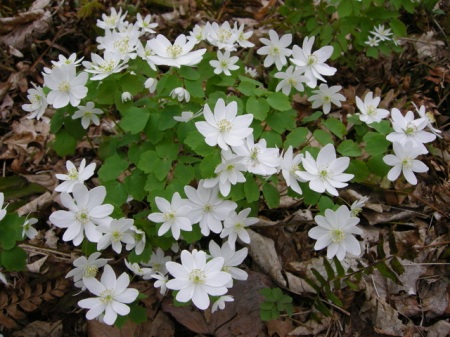 Rue-anemone, Anemonella thalictroides, is so delicate looking but thrives and self-sows in dry shade.
Rue-anemone, Anemonella thalictroides, is so delicate looking but thrives and self-sows in dry shade.
.
 ‘Quicksilver’ large-flowered trillium, T. grandiflorum, was selected as a rapidly multiplying form of the species by Dr. Richard Lighty, at the Mt. Cuba Center in Delaware.
‘Quicksilver’ large-flowered trillium, T. grandiflorum, was selected as a rapidly multiplying form of the species by Dr. Richard Lighty, at the Mt. Cuba Center in Delaware.
.
 ‘Quicksilver’ surrounded by rue-anemone.
‘Quicksilver’ surrounded by rue-anemone.
.
 I find yellow toad trillium, T. luteum, quite easy to grow.
I find yellow toad trillium, T. luteum, quite easy to grow.
.
.
 The two-tone flowers of purple trillium are gorgeous.
The two-tone flowers of purple trillium are gorgeous.
.
 squirrel-corn, Dicentra canadensis
squirrel-corn, Dicentra canadensis
.
 Blue cohosh, Caulophyllum thalictroides, has these unprepossessing flowers in the spring followed by bright blue berries. I love its leaf and stem structure and elegant overall habit.
Blue cohosh, Caulophyllum thalictroides, has these unprepossessing flowers in the spring followed by bright blue berries. I love its leaf and stem structure and elegant overall habit.
.
 Blue cohosh can act like a small shrub, here with an underplanting of squirrel-corn.
Blue cohosh can act like a small shrub, here with an underplanting of squirrel-corn.
.
 Virginia bluebells, Mertensia virginica, were everywhere just like they are in my own garden where they seed prolifically.
Virginia bluebells, Mertensia virginica, were everywhere just like they are in my own garden where they seed prolifically.
.
 Eastern false rue-anemone, Enemion biternatum, is a new plant to me. I am going to look for it though because its flowers were lovely perched on reddish stems and it evidently spreads to make an eye-catching patch.
Eastern false rue-anemone, Enemion biternatum, is a new plant to me. I am going to look for it though because its flowers were lovely perched on reddish stems and it evidently spreads to make an eye-catching patch.
.
 I thought what Longwood had done to the stump of a tree that came down was very interesting and actually quite attractive.
I thought what Longwood had done to the stump of a tree that came down was very interesting and actually quite attractive.
.
 Adder’s tongue or what I call trout lily, Erythronium americanum, usually produces hundreds of leaves and a few flowers in my garden, but this year it is blooming well everywhere.
Adder’s tongue or what I call trout lily, Erythronium americanum, usually produces hundreds of leaves and a few flowers in my garden, but this year it is blooming well everywhere.
.
 The emerging fronds of Christmas fern, Polystichum acrostichoides, look like fairies should be dancing among them.
The emerging fronds of Christmas fern, Polystichum acrostichoides, look like fairies should be dancing among them.
.
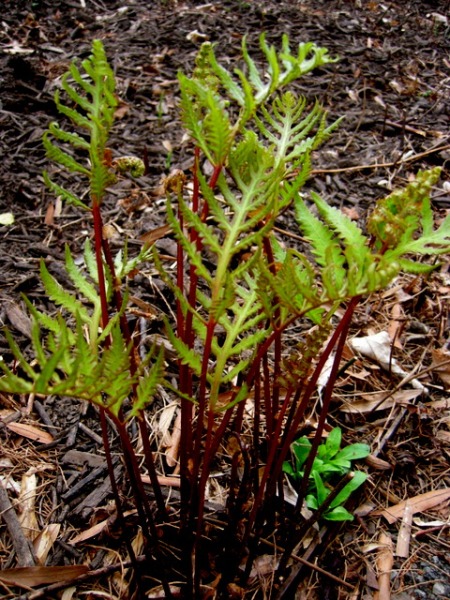 Sensitive fern, Onoclea sensibilis, is a great native fern that is underused in gardens.
Sensitive fern, Onoclea sensibilis, is a great native fern that is underused in gardens.
.
 Sensitive fern looks great in a mass planting.
Sensitive fern looks great in a mass planting.
.
 The wind was roaring when I tried to photograph these spring-beauties, Claytonia virginica, so they are out of focus, but I didn’t want you to miss them.
The wind was roaring when I tried to photograph these spring-beauties, Claytonia virginica, so they are out of focus, but I didn’t want you to miss them.
.
 Spring-beauty really has an amazing flower even when blurry.
Spring-beauty really has an amazing flower even when blurry.
.
 Large -leaf waterleaf, Hydrophyllum macrophyllum, has very pretty foliage.
Large -leaf waterleaf, Hydrophyllum macrophyllum, has very pretty foliage.
.
 Cutleaf toothwort, Cardamine concatenata, is a spring ephemeral that naturalizes slowly to form a colony in the shade.
Cutleaf toothwort, Cardamine concatenata, is a spring ephemeral that naturalizes slowly to form a colony in the shade.
.
 Large-flowered bellwort, Uvularia grandiflora, is one of my favorites. It grows 1 to 2 feet tall, has unusual and elegant yellow flowers, and grows in full, dry shade. I don’t know why this plant isn’t more popular, but it doesn’t sell well at my nursery even though I have big stands of it in my display gardens.
Large-flowered bellwort, Uvularia grandiflora, is one of my favorites. It grows 1 to 2 feet tall, has unusual and elegant yellow flowers, and grows in full, dry shade. I don’t know why this plant isn’t more popular, but it doesn’t sell well at my nursery even though I have big stands of it in my display gardens.
All the plants profiled are native to Pennsylvania and the East Coast. If you would like to see if a plant is native to your state, the best place to look is the USDA Natural Resources Conservation Service Plants Database. All you do is put in the name of the plant and you will be shown a map of where it is native in the U.S. I also have all these plants in my garden except toothwort and false meadow-rue, and I highly recommend them.
To read more about Longwood Gardens, follow these links:
Groundcovers, Thinking Outside the Box
Longwood Gardens Part 2: At Night
Cold Weather Antidote: Longwood’s Orchids
Carolyn
.
Carolyn’s Shade Gardens is a retail nursery located in Bryn Mawr, Pennsylvania, US, zone 6b. The only plants that we mail order are snowdrops and miniature hostas and only within the US.
If you are within visiting distance and would like to receive catalogues and information about customer events, please send your full name and phone number to carolynsshadegardens@verizon.net. Subscribing to my blog does not sign you up to receive this information.
Nursery Happenings: The 2013 Spring Shrub Offer is now in full swing and orders are due May 18. To read about the plants available and place an order, click here. The 2013 Miniature Hosta Mail Order Catalogue, containing choice selections of miniatures for shipping all over the US, is now on the right sidebar here, and we are ready to ship. If you are local, you can use the catalogue to see what miniatures are available at the nursery.
Facebook: Carolyn’s Shade Gardens has a Facebook Page where I post single photos, garden tips, and other information that doesn’t fit into a blog post. You can look at my Facebook page here or click the Like button on my right sidebar here.
Notes: Every word that appears in orange on my blog is a link that you can click for more information. If you want to return to my blog’s homepage to access the sidebar information (catalogues, previous articles, etc.) or to subscribe to my blog, just click here.




